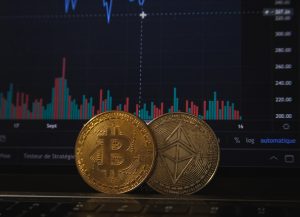The foreign exchange market is a dynamic and complex system that is constantly changing. Forex rates, which are the prices at which one currency can be exchanged for another, are constantly fluctuating due to a variety of factors. These factors include geopolitical events, economic indicators, central bank policies, and market sentiment. As a result, forex rates can change frequently, sometimes even within a matter of seconds.
In general, forex rates are determined by the supply and demand for a particular currency. When there is high demand for a currency, its value will increase, and when there is low demand, its value will decrease. This supply and demand dynamic is influenced by a number of factors, including interest rates, inflation rates, economic growth, political stability, and international trade.
One of the most important factors that can cause forex rates to change is interest rates. When interest rates are high, investors are more likely to want to hold onto a currency, as they can earn a higher return on their investment. This can lead to an increase in demand for that currency, and as a result, its value will increase. Conversely, when interest rates are low, investors are less likely to hold onto a currency, and its value may decrease.
Another factor that can influence forex rates is inflation. When a country experiences high levels of inflation, the purchasing power of its currency decreases, as the cost of goods and services increases. This can lead to a decrease in demand for that currency, and as a result, its value may decrease. Conversely, when a country experiences low levels of inflation, its currency may be seen as more valuable, and its value may increase.
Economic growth can also have an impact on forex rates. When a country’s economy is growing, it is seen as more attractive to investors, and demand for its currency may increase. Conversely, when a country’s economy is struggling, investors may be less likely to hold onto its currency, and its value may decrease.
Political stability is another important factor that can influence forex rates. When a country experiences political turmoil or instability, investors may be less likely to hold onto its currency, and its value may decrease. Conversely, when a country is seen as politically stable, its currency may be seen as more valuable, and its value may increase.
Finally, international trade can also have an impact on forex rates. When a country is heavily involved in international trade, its currency may be in high demand, as businesses need it to purchase goods and services from other countries. Conversely, when a country is not as involved in international trade, its currency may be seen as less valuable, and its value may decrease.
Given the many factors that can influence forex rates, it is not surprising that they can change frequently. In fact, forex rates can change within a matter of seconds, particularly in response to news events or market sentiment. For example, if a major economic indicator is released that shows unexpected weakness in a country’s economy, its currency may quickly lose value.
Overall, understanding how forex rates change is important for anyone who is involved in international trade or investment. By keeping a close eye on economic indicators, central bank policies, and geopolitical events, investors can gain a better understanding of how forex rates may change in the future. While forex rates can be volatile and unpredictable, they are also a vital part of the global economy, and understanding how they work can help investors make informed decisions about their investments.






